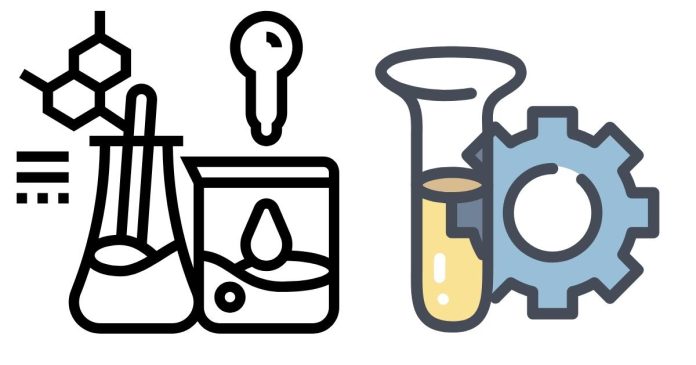In the study of materials and their mechanical properties, yield stress and proof stress are two important concepts used to understand how materials behave when subjected to stress and strain. Both terms are related to a material’s ability to deform, but they have distinct meanings and applications in engineering and material science.
This article explores the differences between yield stress and proof stress, including their definitions, measurement methods, and practical implications.
Yield Stress
Definition:
Yield stress (often called the yield strength) refers to the stress at which a material begins to undergo permanent deformation, or plastic deformation. Up to this point, the material behaves elastically, meaning it will return to its original shape once the applied stress is removed. However, once the yield stress is exceeded, the material will not return to its original form, even after the stress is removed.
In simpler terms, yield stress is the point where a material transitions from elastic behavior (temporary deformation) to plastic behavior (permanent deformation).
Measurement of Yield Stress:
The yield stress is typically determined through a tensile test or stress-strain curve, which involves stretching a material and measuring its deformation. A graph of stress versus strain is plotted, and the yield stress is identified as the point where the curve deviates from a linear path (which corresponds to elastic deformation) and begins to curve, indicating the onset of plastic deformation.
There are two common ways to define yield stress:
- 0.2% offset method: This method involves drawing a line parallel to the initial linear portion of the stress-strain curve and offset by 0.2% strain. The intersection of this line with the stress-strain curve gives the yield stress.
- Proportional limit: The proportional limit is the point at which the stress and strain no longer have a proportional relationship (linear behavior). For many materials, this is close to the yield point, but they are not always the same.
Significance of Yield Stress:
- Yield stress provides a critical value for engineers and material scientists to design components that will not undergo irreversible deformation during regular use.
- It is used in the design of structures and materials where permanent deformation is undesirable, such as in bridges, buildings, and vehicles.
Proof Stress
Definition:
Proof stress is a term often used when the yield stress cannot be easily defined, such as in materials that do not show a clear yield point or in cases where it is difficult to accurately measure the yield stress. Proof stress is defined as the stress at which a material undergoes a specified, small amount of permanent (plastic) deformation, typically 0.2% strain.
Proof stress is especially important for materials that exhibit a gradual transition from elastic to plastic behavior (i.e., they do not have a sharp yield point). In such cases, proof stress provides a practical way to quantify the material’s ability to resist permanent deformation under stress.
Measurement of Proof Stress:
Proof stress is generally determined by applying a specified amount of strain (usually 0.2%) to the material, then measuring the corresponding stress. This is done through the tensile test, and the stress at the 0.2% offset strain is taken as the proof stress.
In practice, proof stress can be used in materials such as mild steel or aluminum, which may not have a well-defined yield point.
Significance of Proof Stress:
- Proof stress is widely used in cases where the yield point is not easily discernible, offering a reliable value for material selection and design purposes.
- It serves as an important value in the engineering of materials that will be subjected to various loads, ensuring that structures are not permanently deformed during normal operations.
Key Differences Between Yield Stress and Proof Stress
| Aspect | Yield Stress | Proof Stress |
|---|---|---|
| Definition | Stress at which a material begins to exhibit permanent deformation (plastic behavior). | Stress at which a material undergoes a specific, small amount of permanent deformation (usually 0.2% strain). |
| Measurement | Measured from the stress-strain curve, often at the point of the curve deviation (plastic deformation). | Measured as the stress at 0.2% strain, usually when there is no distinct yield point. |
| Application | Used for materials with a clear yield point, to indicate the transition from elastic to plastic behavior. | Used when materials have no clear yield point or when a precise yield point is difficult to determine. |
| Common Use | Steel, alloys, and other materials with well-defined yield points. | Mild steel, aluminum, and materials with gradual transitions from elastic to plastic behavior. |
| Behavior at Yield Point | Sharp transition from elastic to plastic deformation. | Gradual transition without a sharp yield point. |
Both yield stress and proof stress are essential concepts in understanding a material’s mechanical properties, particularly its ability to resist deformation under stress. While yield stress refers to the point where a material starts to permanently deform, proof stress is a more practical measure, especially in cases where the yield point is not clear.
In materials that exhibit a clear yield point, engineers typically use yield stress to design safe and reliable structures. For materials without a distinct yield point, proof stress offers an effective alternative, ensuring that the material will not deform under normal operating conditions.
By understanding both yield stress and proof stress, material scientists and engineers can make informed decisions about material selection, ensuring that structures and components maintain their integrity during their expected use.
Related posts:
- What does ringing in the ears mean spiritually?
- What Colors Do Blue and Green Make?
- How Long Does Raw Chicken Really Last in the Fridge?
- What are some amazing and memorable Valentine’s Day ideas that will leave a lasting impression?
- What is the definition of ‘friends with benefits?
- What is the difference between a bachelor’s and a degree?


